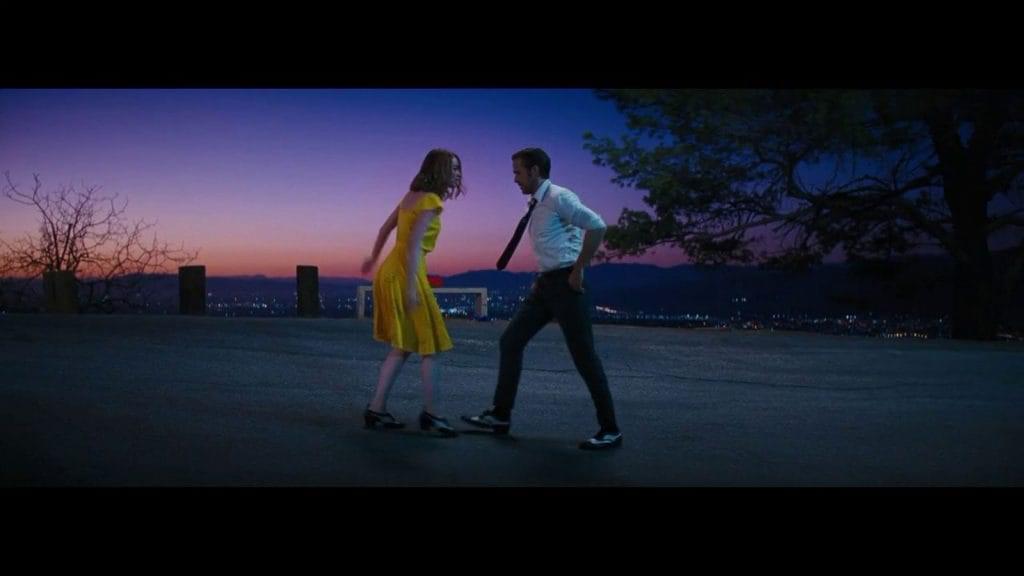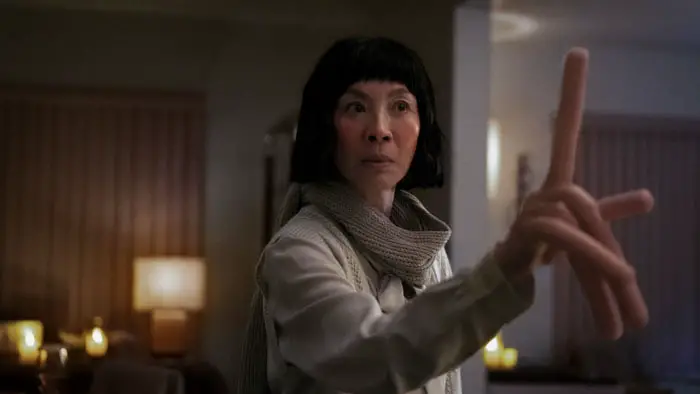
Film “firsts” are not easy to confirm. Critics and scholars hesitantly identify a particular person or group as the first to have employed a method or express an ideology. If one is concerned about being wrong, one could provide a disclaimer that allows room for error. The films in “The Matrix” trilogy may not have been the “first” movie that featured those fancy stop-spin camera tricks, but it was the first to popularize them. The below transcription consists of three “firsts” and fortunately for me, I know them to be fact. I recently conducted my first interview with daytime-film-professors-spare-time-filmmakers Eddy Von Mueller and Evan Lieberman; their film The Lady of Sockholm is the world’s first full-length feature about sock puppets; and it was shown for the first time at the 29th annual Atlanta Film Festival.
What were your visual influences?
Evan Lieberman: 40s Hollywood, particularly film noir. There are direct references in our film to “The Big Sleep,” “Double Indemnity,” “The Maltese Falcon.”
Eddy Von Mueller: “Citizen Kane,” “The Touch of Evil,” “The Lady of Shanghai,” and the carnival scene in “Strangers on a Train.”
But “The Lady of Sockholm” isn’t set in L.A. and it’s in color.
EM: No, it’s not set in Los Angeles. It takes place in New Jersey, which is a reference to fabric.
EL: We intended on the film being in black and white, so we didn’t think about whether or not the colors of the puppets clothes and the sets would clash.
EM: It was during post-production that someone suggested the film be in color and luckily it worked. The film looks great in color.
I counted nine puns (“on a shoe string,” “bootsie,” “hang nail,” “pain in the arch,” “that stuff will eat a hole in you,” “Archie,” “I’m a thread short this month,” “I’m gonna have to walk,” “why don’t you take off for the day”) in the first four minutes and thirty seconds of the film. Is my compulsion to want to make a note of all the puns an intended reaction?
EL: Wow. (laughs). There were that many?
EM: We would discourage that sort of reaction. A conscious effort to keep track of all the puns would distract you from the rest of the story. There has to be a million puns in the film. Having three or four puns would be “too much” because they’re too conspicuous.
The story itself alludes to World War II and anti-German sentiment in the US. If one were to apply the politics to the present, what would they address?
EL: The fear of wool socks is ultimately about the idea that what you’re made of isn’t important. It shouldn’t matter. A person shouldn’t be judged according to what they are but by what they do.
EM: The thematic core of “Sockholm” is about misdirected hostility. Look at any war. People always want someone to blame.
EL: Film noir is an ideal genre for making these statements because noir films resonate; they’re timeless. They address postwar angst—postwar traumatic angst. There’s anxiety and some self-loathing.
EM: Being film scholars was beneficial because between the both of us we have an encyclopedic knowledge of the film noir genre. We had instant access to narrative and stylistic conventions.
EL: We could rationalize the ethnic stereotyping—Irish cops, African-American barbershop employees—and not be so politically correct.
What was it like collaborating with puppeteers?
EM: The sock puppets that Evy Wright made, based on sketches I had done, had no stunt doubles—they are actually quite fragile.
EL: We weren’t allowed to touch them during production. I was involved with some of the cinematography, but our task was to direct. Since we couldn’t go near the puppets, we were able to focus on wanting to do a bunch of stuff the puppeteers said we couldn’t do. (laughs). Cotton had to smoke; what film noir doesn’t have characters smoking? We had to improvise it. The puppets couldn’t get wet so there was no actual drinking of liquids. The sets were raised so that the puppeteers could stand, and they were awesome.
EM: Evy, Annie Peterle, Reay Kaplan, and Vince Tortorici—the puppeteers—also perform at Atlanta’s Center for Puppetry Arts. They were very professional and knew how to give the puppets life. There is a strong puppetry tradition in Eastern Europe and there isn’t one in the States, so we were really fortunate to be able to work with members of the Atlanta film and performing arts community that are skilled in this kind of art.
EL: Vince was amazing.
EM: I really enjoyed the fact that we could do the fantastic without fancy smancy cgi and blue screens. We didn’t erase the thin metal poles attached to the puppets’ arms because we wanted them to have a homemade, “arts and crafts” feel.
EL: It was also nice to be able to talk on set during shooting.
How intentional was it that Kicky LaFetiche resembled Miss Piggy and what kind of sock is Archie?
EL: Not intentional at all. We actually had Louise Brooks and Rita Hayworth in mind. Heelda Brum was supposed to be Veronica Lake-ish. Archie is argyle.
EM: We wanted him to have the collegiate look.
What camera was used and how many days did it take to shoot the film?
EL: Arriflex SR. All of our equipment was provided by Georgia State University’s Digital Arts Entertainment Lab (or DAEL). Filming lasted about twelve days and was all done on a sound stage at our production studio Encyclomedia. It took about a year to finish post-production.
Many indie films are created with the one-man-band method, where directing, writing, producing, and even camera operating are done by one person. How does directing a film you didn’t write or produce compare with instances when you are doing “everything”?
EL: Production ran very much like standard Hollywood fare. In indie filmmaking, it’s common for one person to have a dozen responsibilities, a lot of stuff to worry about. But we had a well-defined division of labor. We implemented minor tweaks in the script but our input was limited and because we weren’t operating the puppets, we could concentrate on the visuals.
EM: For example, in the scene that references “Double Indemnity,” the one where Barbara Stanwyck is coming down the stairs, there’s a floor for characters without feet. It doesn’t occur to you that there isn’t a floor but in that one scene. But we wanted the floor because emphasizes the cinematic aspect of the film.
EL: It was great not to have to worry about the lighting, the camera, the costumes, or the sets not only because we may or may not have the necessary experience but also because we had people who were awesome at what they did. Jon Swindall was our lighting designer and co-cinematographer. He captured the styles of 40s cinematography. Jeffrey Zwartjes designed the sets and props—it was absolutely amazing what he could do. He experimented with magnets in the car chase scene and took model cars apart to film from certain angles. He built this ramp with a crank to make it look like the road was going by. He made, built, found, put together small newspapers the socks read, furniture, everything the puppets touched.
What is one valuable lesson you learned from this experience?
EM: Film is art born out of an argument. There is an assumption that movies should incorrectly cater to its content or the audience. For example, kid films are often stupid but they shouldn’t be stupid. “SockhoIm” may be a “family” film, but we weren’t going to confine it to the audience’s expectations. I also learned more about the role of the director and what it means in practice to direct something you didn’t write or produce.
EL: I learned the pros and cons of a fully collaborative effort. The idea of the auteur is what makes film studies possible, but there is no glamorized auteur; authorship is limited. “The Lady of Sockholm” is our movie, the collective crew’s movie. The upside of less creative control is that you don’t have the burden or responsibility of doing it all.
EM: It’s too exhausting to wear every hat.
EL: They may want your approval on everything, but you have to let the people who work with and for you do their job. You have to let them surprise you.

